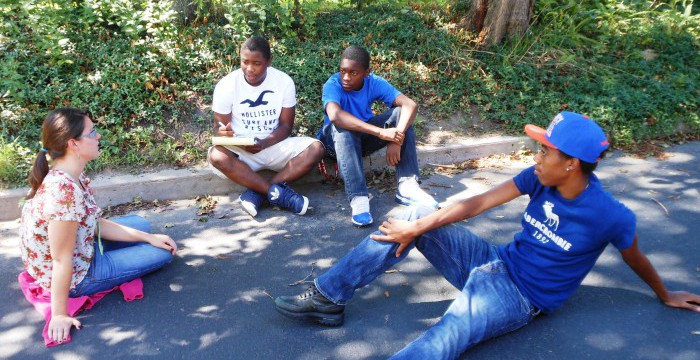
Restorative practices have proven their ability to build strong school communities, strengthen relationships among students, staff, and parents, and address problems such as bullying and violence.
For Students
Sometimes, getting along with other people can be hard. Many students (and most people!) find some of these issues difficult at times:
- Working in groups
- Dealing with competition
- Forming and maintaining friendships without excluding others in harmful ways
- Speaking up about difficult or sensitive issues
- Or maybe there’s someone you just can’t talk to, or someone who “pushes your buttons” or someone that is picking on you.
It takes practice to learn how to communicate in ways that make all of these issues easier to deal with. Restorative practices can help you:
- Develop leadership and teamwork skills
- Strengthen your team, group, or school community
- Make deeper connections with others
If you are interested in how restorative practices might help you and your school, please contact us. We have worked with student groups before. Or ask your teacher, counselor, or principal to visit this site.[/toggle]
For Parents
Restorative practices can help your child and your school.
Regular use of restorative practices can:
- Improve communication skills
- Increase “emotional intelligence”
- Teach students how to work together peacefully
- Build community
- Strengthen leadership skills
- Help deal with the effects of bullying and other wrongdoing in schools, in ways that help all involved
Please contact us if:
- You think your child is a victim of bullying and would like to explore restorative solutions
- You would like to encourage your school to use restorative practices
- You would like to know more about how restorative practices can help children
“It is a fundamental right for a child to feel safe in school and be spared the repeated, intentional humiliation that occurs in bullying.”
Daniel Olweus, National School Safety Council
For Educators
Schools should be safe spaces where students can learn and grow. All students have the right to learn in a school free from harassment and bullying. Restorative practices can help prevent behavior problems, and to deal with them in ways that promote student growth and learning when they do happen.
How do restorative practices work in schools?
Community-Building Strategies promote strong relationships, opportunities for problem solving, and a sense of belonging. Informal practices such as Care Packages can be used everyday to build connection among everyone in the school community. Formal strategies such as Community-Building Circles provide regular opportunities for members of a community to speak honestly and listen deeply.
Academic Circles can be used to promote active learning in every subject area at any point in the instructional day.
Restorative Discipline Strategies can be used by students and staff in response to situations where conflict or harm has occurred. Informal strategies such as Restorative Conversations can be used by students and staff to address everyday conflicts and behavior concerns. Formal strategies such as Circles to Repair Harm and Re-Engagement Circles can be used to bring key participants together to make things right after harm has occurred.
Community Conferences refer to a formal process that brings victims, offenders, family, and school community members together to address wrongdoing. Together, all participants develop a plan to repair the harm or abuse. This process restores a sense of community in schools by allowing the victim to be heard and the one who harmed to take responsibility and to make amends.
Students who experience restorative practices in schools learn effective ways of communicating, have fewer behavior problems, and bully less often. They report feeling a sense of belonging and a more positive attitude toward other students and staff.
What does it take to implement restorative practices in a school?
Every school varies. However, the process usually looks something like this:
- Representatives from Partners in Restorative Initiatives meet with school administrators to do a needs assessment and work up a plan
- A core group of people on the planning team attend a series of trainings
- This core group uses restorative practices in their teaching, counseling, advisory, or disciplinary roles and plan with others for further implementation
- Over time, the use of restorative practices spreads, as more staff are trained and students become more familiar with the process
Contact us to schedule a consultation or to learn more about implementing restorative practices in your school or district.
